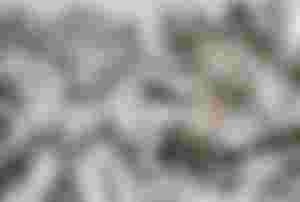"Hellfire is awful, huge and, moreover, it is prudent," writes the French historian Jean Delumeau in the book Sin and Fear, which deals with creating a sense of guilt in the West from the 14th to the 18th century.

If we ask the question of how hell was imagined in the past, we find the most vivid descriptions at that time, in the late Middle Ages. Namely, the representations of hell then play an important role both in the intimate life of the individual and in the wider social context.
Many modern historians characterize this age, which precedes religious wars and hints of gradual changes in Europe, as an age of fear. Sin is certainly as widespread as in any age of human history and therefore, in the absence of accessible education, the fear of hellish torments is the most powerful weapon for social control.
"Fire will be your element, it will feed you, it will sustain you forever to torment you forever," said the French preacher Gerard, in order to, like many Christian orators in the late Middle Ages, vividly describe what awaits the souls of the damned in the fires of hell.
In the ancient tradition that preceded the idea of Christian hell, this space was conceived as cold and dark, but even with Christian thinkers, from Tertullian and St. Augustine to Jesuit scholastics, the image of hell is far more complex than the image of a glowing pot in which the souls of the accursed are simmering forever .
According to the scholastic division into eighteen accompanying torments of the damned, the punishment by cold, rigor frigoris, is in the seventh place between "fire that does not destroy" and "hunger that rages".
Unlike previous epochs, such paintings are not confined to monastic cryptocurrencies and do not concern only a select group of educated people. They inspire the performances on the frescoes and make the content of the sermons of wandering preachers frightening.
Like many such preachers in the 16th and 17th centuries, the wandering Italian Jesuit Paolo Segneri, one of the most inspired orators on hell, gave his frightening sermons at dusk, in a meadow on the outskirts of the settlement.
When his horrified audience came to a state of complete intimidation, Senjeri led him to the waist and with a whip "all those who are sinners" to the church where, in semi-darkness, mass self-punishment and repentance were carried out by candlelight.
Singer is said to have said: "You will feel the embers of the embers, the cold of the glacier, the bite of the snake, the bile of the dragon, the teeth of the lion, the intensity of the torture, the tearing of the nerves, the dislocation of the bones, the hail of stones, the rain of whips, the neck iron chains, the chains on your hands. Iron reefs, gallows, wheels and horses, tortured, it will all come together and come together. "
Today, one can only imagine how while this is being uttered, Senjeri's eerie voice echoes between the walls painted with representations of hell and the dance of the dead. The picture shows a detail of the composition The Triumph of Death by Peter Brueghel from the 16th century.

that the bible mentions that people will chew their tongues in agony